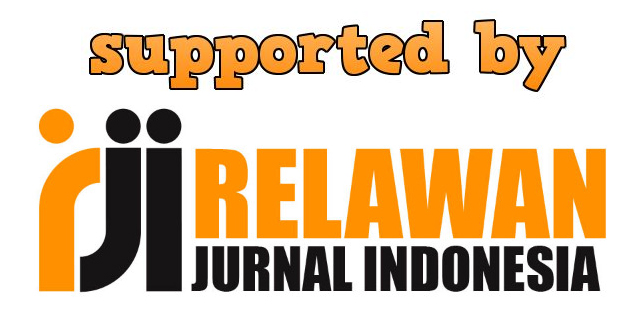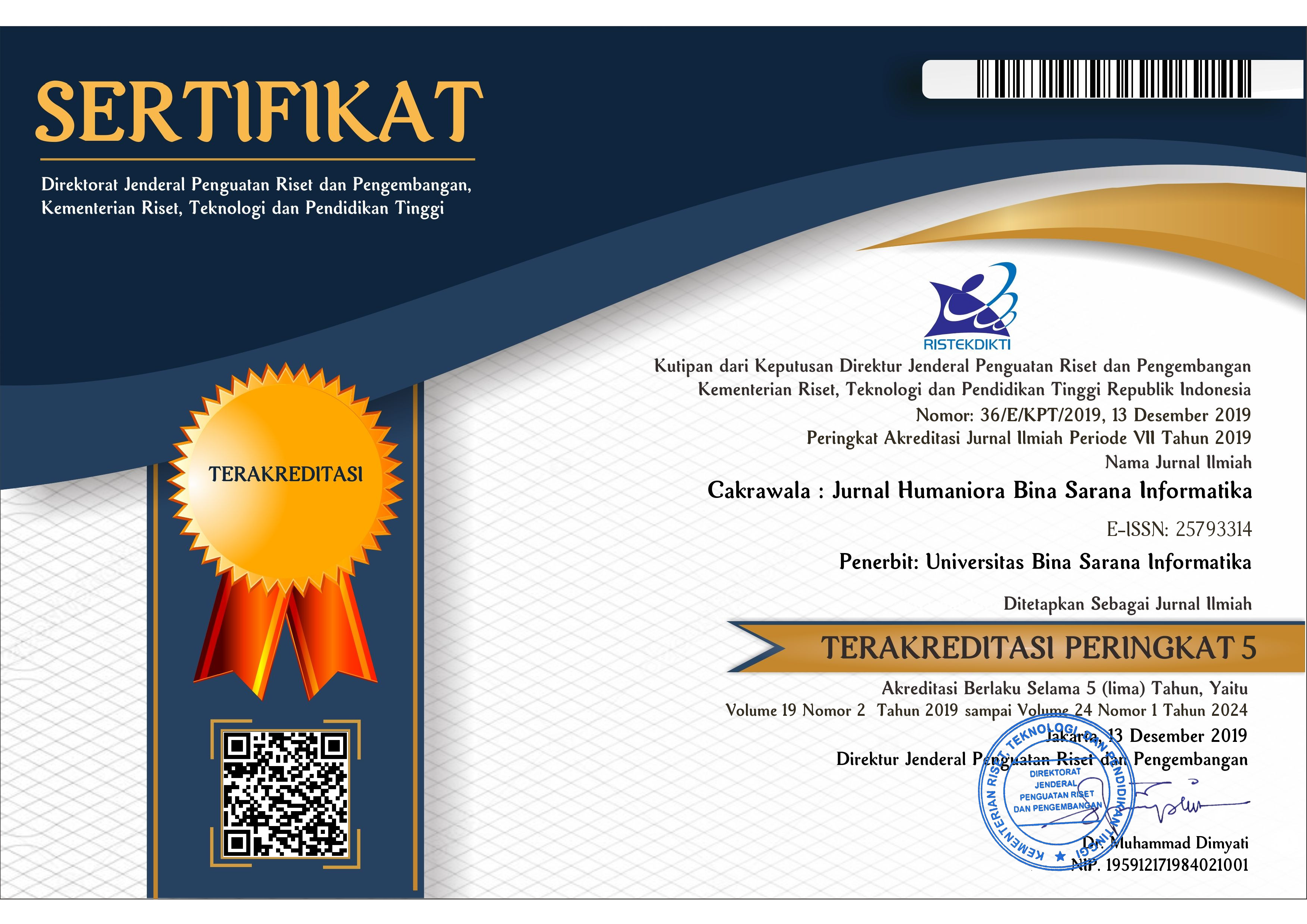Analisis Jaringan Media Sosial Tentang Eksistensi Kaum Borjuis Dalam Budaya Pop Citayam Fashion Week
Abstract
Full Text:
PDFReferences
Al-Rawi, A. (2019). Viral News on Social Media. Digital Journalism, 7(1), 63–79. https://doi.org/10.1080/21670811.2017.1387062
Anne, S., Bedard, N., & Tolmie, C. R. (2018). Millennials’ Green Consumption Behaviour: Exploring the Role of Social Media. Corporate Social Responsibility and Environmental Management, 25(6), 1388–1396. https://doi.org/10.1002/csr.1654
Eriyanto. (2021). Analisis Jaringan Media Sosial Dasar-dasar dan Aplikasi Metode Jaringan Sosial untuk Membedah Percakapan Media Sosial. Jakarta: Prenadamedia Group.
Freelon, D., McIlwain, C., & Clark, M. (2018). Quantifying the Power and Consequences of Social Media Protest. New Media and Society, 20(3), 990–1011. https://doi.org/10.1177/1461444816676646
Gaál, Z., Szabó, L., Obermayer-Kovács, N., & Csepregi, A. (2015). Exploring the Role of Social Media in Knowledge Sharing. The Electronic Journal of Knowledge Management, 13(3), 185–197. https://doi.org/10.1145/3047273.3047374
Goel, S., Anderson, A., Hofman, J., & Watts, D. J. (2016). The Structural Virality of Online Diffusion. Management Science, 62(1), 180–196. https://doi.org/10.1287/mnsc.2015.2158
Kim, J., & Hastak, M. (2018). Social Network Analysis: Characteristics of Online Social Networks After a Disaster. International Journal of Information Management, 38(1), 86–96. https://doi.org/10.1016/j.ijinfomgt.2017.08.003
Maresca, A., & Meyer, D. S. (2020). Tracking the Resistance. Sociology Compass, 14(11), 1–13. https://doi.org/10.1111/soc4.12827
Meredith, J., Giles, D., & Stommel, W. (2021). Introduction: The Microanalysis of Digital Interaction. In J. Meredith, D. Giles, & W. Stommel (Eds.), Analysing Digital Interaction (pp. 1–22). Switzerland: Palgrave Macmillan.
Milani, E., Weitkamp, E., & Webb, P. (2020). The Visual Vaccine Debate on Twitter: A Social Network Analysis. Media and Communication, 8(2), 364–375. https://doi.org/10.17645/mac.v8i2.2847
Mills, C. W. (2018). The Power Elite. In D. B. Grusky & K. R. Weisshaar (Eds.), Social Stratification Class, Race, and Gender in Sociological Perspective (Fourth Edi, pp. 517–534). New York: Routledge. Retrieved from https://medium.com/@arifwicaksanaa/pengertian-use-case-a7e576e1b6bf
Nasrullah, R. (2016). Media Sosial Perspektif Komunikasi, Budaya, dan Sosioteknologi. Bandung: Simbiosa Rekatama Media.
Nisak, M., & Sulistyowati, T. (2022). Gaya Hidup Konsumtif Mahasiswi Dalam Trend Fashion (Studi Kasus Mahasiswi Jurusan Manajemen Universitas Islam Lamongan). Jurnal Sosial Humaniora Terapan, 4(2), 86–96.
Shu, K., Bernard, H. R., & Liu, H. (2019). Studying Fake News via Network Analysis: Detection and Mitigation. In N. Agarwal, N. Dokoohaki, & S. Tokodemir (Eds.), Emerging Research Challenges and Opportunities in Computational Social Network Analysis and Mining (pp. 43–65). Switzerland: Springer International Publishing. https://doi.org/10.1007/978-3-319-94105-9_3
Stockmann, D., & Luo, T. (2017). Which Social Media Facilitate Online Public Opinion in China? Problems of Post-Communism, 64(3–4), 189–202. https://doi.org/10.1080/10758216.2017.1289818
Storey, J. (2010). Pengantar Komprehensif Teori dan Metode Cultural Studies dan Kajian Budaya Pop. Yogyakarta: Jalasutra.
Trabelsi-Zoghlami, A., & Touzani, M. (2019). How Real are Virtual Experiences? For a Better Understanding of Virtual Experiences and Their Impact on Consumers’ Real Life. European Journal of Marketing, 53(8), 1612–1636. https://doi.org/10.1108/EJM-10-2017-0776
Ureña, R., Kou, G., Dong, Y., Chiclana, F., & Herrera-Viedma, E. (2019). A Review on Trust Propagation and Opinion Dynamics in Social Networks and Group Decision Making Frameworks. Information Sciences, 478, 461–475. https://doi.org/10.1016/j.ins.2018.11.037
Zhai, Y., Ding, Y., & Zhang, H. (2021). Innovation Adoption: Broadcasting Versus Virality. Journal of the Association for Information Science and Technology, 72(4), 403–416. https://doi.org/10.1002/asi.24420
DOI: https://doi.org/10.31294/jc.v23i1.14730
ISSN: 2579-3314


Dipublikasikan oleh LPPM Universitas Bina Sarana Informatika
Jl. Kramat Raya No.98, Kwitang, Kec. Senen, Kota Jakarta Pusat, DKI Jakarta 10450

This work is licensed under a Creative Commons Attribution-ShareAlike 4.0 International License









